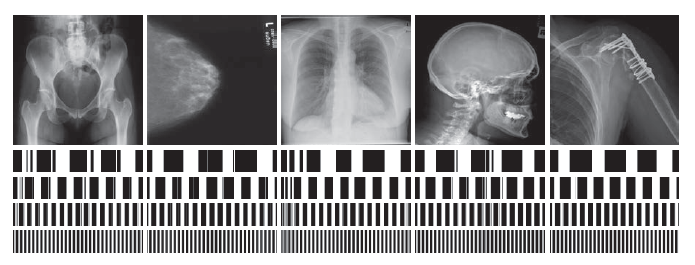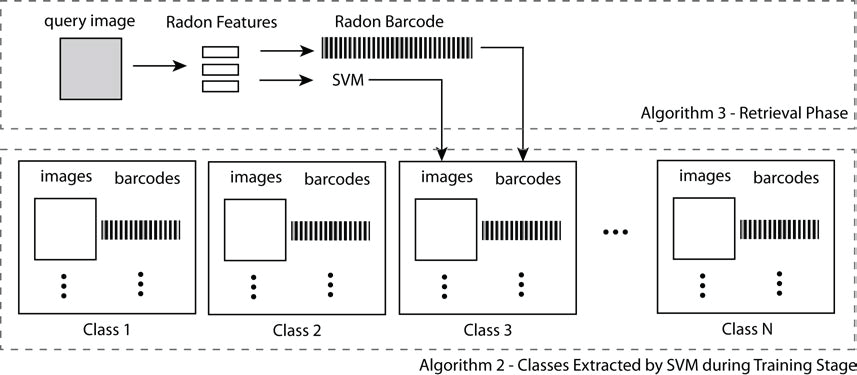July 2016
Content-based image retrieval (CBIR) is a technique used to search for similar images in a database based on visual features extracted from the images themselves, rather than relying on accompanying text or metadata. CBIR has found applications in various fields such as education, e-commerce, the internet, and biomedical research. Early CBIR systems focused on visual characteristics like color, texture, and shape, while more recent approaches have incorporated semantic content. In the medical field, CBIR systems have been developed to assist clinicians in diagnostic tasks by retrieving similar cases. However, existing medical CBIR systems are often limited to specific modalities, organs, or diagnostic studies, and there exists a “semantic gap” between the extracted image features and the interpretation of doctors. In this paper, a novel approach based on support vector machines (SVM) and Radon transform is proposed for medical image retrieval using Radon barcodes. The proposed method is tested on the IRMA benchmarking dataset consisting of 14,410 x-ray images.

This section provides a brief overview of support vector machines (SVM) and Radon barcodes. SVM is a machine learning algorithm used for classification tasks. It constructs a hyperplane that maximally separates training samples belonging to different classes. The Radon transform is an integral transform that computes the projection of an image along various directions. It can be used to accentuate straight-line features in an image. Radon barcodes are binary codes generated based on the Radon transform. They can be used to tag and annotate medical images or regions of interest within them. Barcodes can be thresholded to create a barcode of thresholded projections, allowing efficient image retrieval using techniques like k-nearest neighbor (KNN) search.
This section describes the proposed image retrieval procedure, which consists of two stages: classification and retrieval. In the training stage, each image in the dataset is normalized to a fixed dimension, and the Radon transform is applied to extract Radon features. These features, along with their corresponding class labels, are used to train an SVM classifier. Radon barcodes are also generated for indexing purposes. In the retrieval stage, the query image undergoes the same normalization and Radon transformation process. The SVM classifier assigns a class to the query image based on its Radon projections. The KNN search method is then used to retrieve the most similar images from the same class based on their Radon barcodes.

This section provides details of the benchmarking data used and the error calculation method for evaluating the proposed method. The IRMA database, which contains 14,410 x-ray images, is used for training and testing. The error score computation approach based on the IRMA code is defined to evaluate the retrieval performance. The proposed method is evaluated in terms of classification accuracy using SVM with Radon features and image retrieval using Radon barcodes. The results show improved classification accuracy with an increase in the number of Radon projection angles. However, achieving high accuracy for every class is challenging, and some specific classes may have low or zero accuracy. The image retrieval results demonstrate the effectiveness of the proposed method compared to direct KNN search.
The paper presents a novel approach for medical image retrieval using SVM and Radon barcodes. The proposed method shows promising results in terms of classification accuracy and image retrieval performance on the IRMA benchmarking dataset. The combination of SVM and Radon transform proves to be effective in extracting relevant features and generating discriminative Radon barcodes for efficient retrieval. Further research can be conducted to explore enhancements to the proposed method and its applicability to other medical imaging application
Additional details: Radon features and barcodes for medical image retrieval via SVM